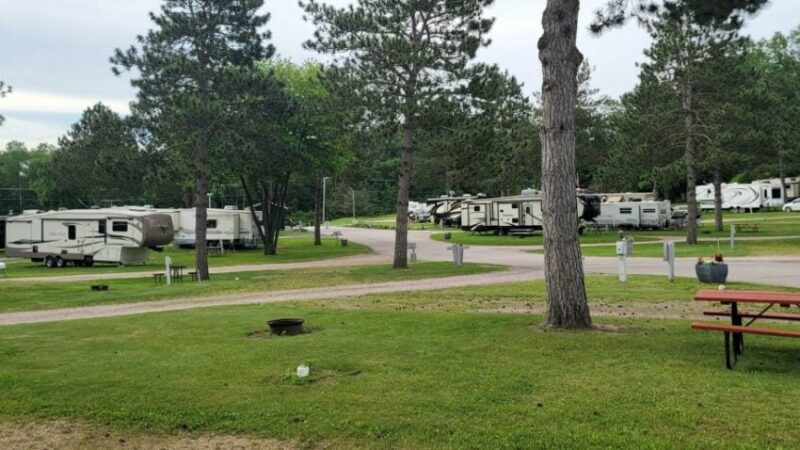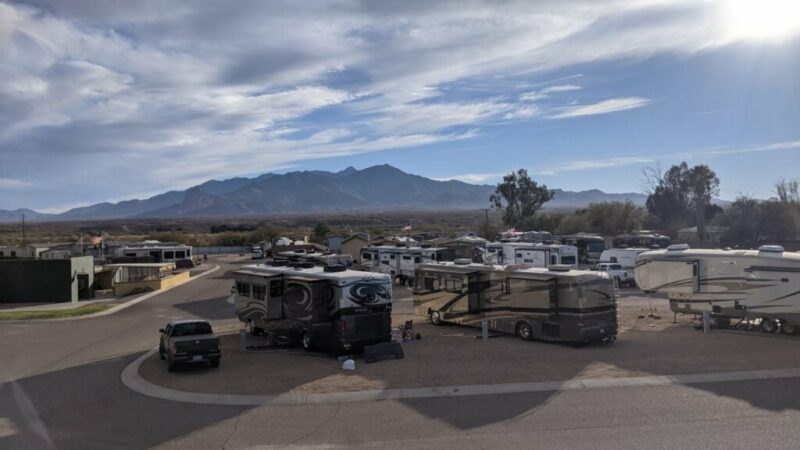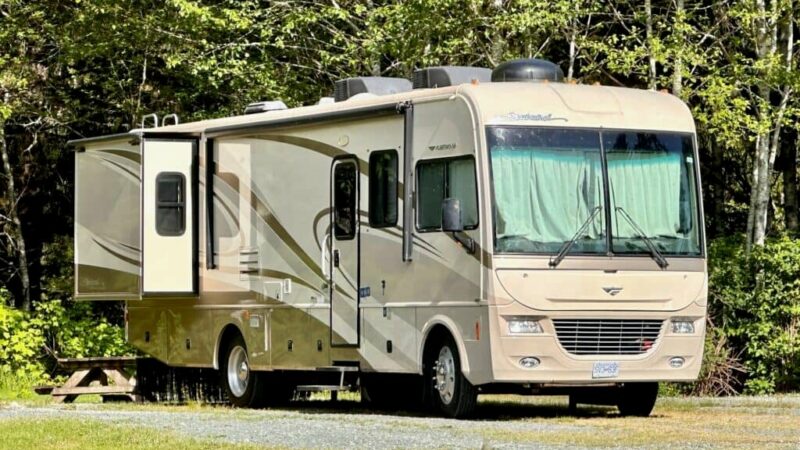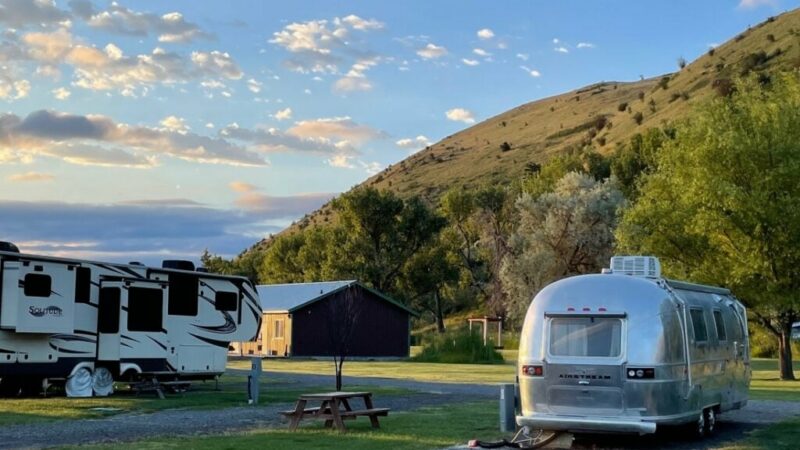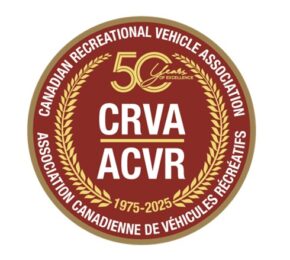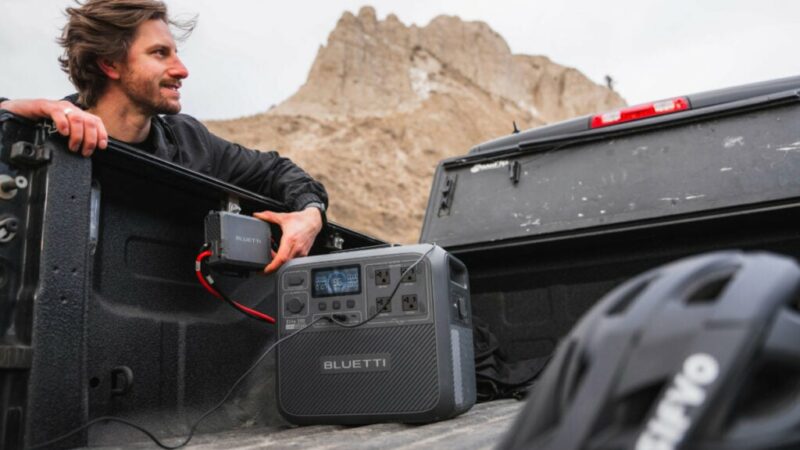Camping Logistics…
Getting the most from your RV experience.
By Garth Cane
Years ago, when you headed off on a long RV trip, it was not unusual for people to park their RVs for the night in farmer’s fields, service station lots, and shopping malls. For all practical purposes, this is the wrong way to start out on an RV vacation!
Campgrounds are essential to the RV lifestyle, whether you stop for the night, a few days, a week or a prolonged visit. Campgrounds provide a convenient, safe place to park with good facilities like water, electricity, sanitation, a camper’s store, swimming, and a good place for the kids to let off steam after a long day on the road.
Today, some campers still frequent shopping mall parking lots for a free overnight stop. They claim that they do not need anything other than a level spot off the road for a nights sleep before traveling on the next morning. They feel that if they are stopping late at night and leaving early in the morning, they do not need any facilities. Unfortunately, some RV’ers set up camp at a shopping mall early in the day and then decide to stay for more than one night so that they can tour the town. This is against local zoning restrictions in many communities and leaves the RV’er open to security issues and distractions in the middle of the night. If you must stop at a highway rest area overnight, the general rule is to stay no more than four hours to rest and then continue your travels. Besides, many trucks that stop keep their engine idling producing diesel exhaust fumes and noise. When you pull into a rest area, drive your RV to one end or the other to allow truckers easier access to the centrally located washroom facilities – you have a bathroom in your RV – they do not.
When you arrive at a campground, you will be welcomed by the manager and the staff who will provide information about the community, things to do, and places to go. They will help you choose a site that is suitable for your RV, with the services that you need during your stay.
As you follow the route to your campsite, be sure to watch for the various obstacles that may interact with your RV – for example, many tree branches hang down when they are in full leaf. These low hanging branches can bend your television antenna or damage a rubber roof.
Holding tank tips…
Since you have been driving all day, or for at least a few hours, the contents of your holding tank will be well mixed with particles in suspension. This makes it easier to empty the black water tank into the dump station at the entrance to the camp. Always dump your tanks after a day of travel when the tanks are at least half to three-quarters full. For most families, the tanks do not need to be dumped for about four or five days. Many environmentally friendly toilet chemicals take several days for the bacteria to effectively do their job of breaking down the effluent. If you dump your tank every day, you are wasting your chemical treatments.
If you do not have enough liquid in the tanks, much of the effluent will not be carried away by the water flow and this will create a solid mess inside the tank. Dumping your tanks when they are full provides enough flow to clean the tanks more efficiently. Always empty the black tank first and then empty the grey water tank. This helps to flush out your sewer hose with soapy water before you put it away. Try not to dump after sitting all night or for a few days in one spot as the effluent will have settled to the bottom of the tank and will be difficult to evacuate without extra flushing.
If you are planning to stay for several days, many RV’ers connect their sewage hose to the drain, dump the tanks, and then leave the dump valve open to allow liquids to escape and keep the tank empty. Wrong! After dumping, the dump valve should be closed to eliminate any odors from coming into your RV from the campground’s sewage system, and to keep the effluent in the tank from hardening.
RV’ers who have a washer/dryer combination installed in their motorhome need to keep the valve open only when they are doing a load of washing and then close the valve. Many campgrounds do not appreciate the extra soapy water going into their septic systems as it dilutes the bacteria action. Why not use the washer and dryer that is provided by the campground. It gives you a chance to meet other campers and find interesting places to visit that you might not have considered.
On the level…
Always level your RV before extending any slide-outs to prevent them from binding as they move out. If you are storing your RV for extended periods of time, it is better to leave them in the travel position to prevent any possible leaks from severe weather. During travel one late fall season, we extended the slide-outs overnight to gain more floor space, and then had trouble retracting them in the morning because it had snowed during the night.
We always place large pads under the foot of each leveling jack to prevent it from sinking into the ground. In some areas where the ground is soft, the jacks can sink easily in the ground or paved area on a hot day. At large rallies where RVs are sometimes parked on an airport runway, blocks of unpainted wood should be placed under the jacks to prevent damage to the asphalt runway.
After the RV is leveled on the site with the jacks and slide-outs deployed, it is time to connect the electrical cord. It is a good idea to check the electricity at your site with a small polarity checker before plugging in your cord. These inexpensive little tools are available from your RV dealer. If we have been traveling on a hot day with the air-conditioner working off the generator, we turn the A/C off before connecting to the campground facilities. Many new motorhomes benefit from a surge suppressor that will protect the computerized circuitry from glitches on the electric supply line.
Water tank tips
When my wife and I are traveling, we fill our water tanks on the day we are leaving and then put the hose away. That way, we will have a supply of water when we are on the road, and do not have to worry whether there will be a site available the next night that has good water. This gives us the option, if necessary, to stay on an overflow site if the campground is full.
Some people that we talk to say that they do not want to carry the extra weight of a full tank of water because they feel that it will affect their fuel economy. When your motorhome weighs close to 19,000 pounds, a difference of 30 gallons of water will not substantially affect the fuel efficiency. Many travel trailers and fifth wheels have been designed for travel with the water tank filled. When you travel with it empty, it can throw off the balance of the RV and cause sway problems.
Awning insights…
Your awning is a real benefit, supplying shade in an area that does not have trees, and a dry area near your doorway when it is raining so that you do not track mud into the RV. If it is raining, it is best to lower the end away from your doorway slightly so that water does not pool on the awning and cause the fabric to stretch. In windy areas, we use tie-down straps to prevent the awning from billowing and rattling from gusts during the night. If it looks too windy, just roll it up, as many insurance companies do not cover awnings for wind damage. If you are planning to sit around a campfire in the evening, make sure that it is well away from the awning to protect it from wind blown sparks, and make sure that the campfire is out before going to bed.
Touring considerations…
If we are parked in a Provincial campground that does not have electricity available, we sometimes turn on the generator in the motorhome to power the microwave or roof air-conditioner for short periods of time during the day. We use an extension to push the exhaust gases up above the roof of the RV so that it does not bother other campers around us. Always be considerate of the other campers when you use any device that will produce noise that might offend others. Please keep the sound level down on your external radio or TV set as you sit under the awning.
Remember that the best speed to travel with an RV is 90km per hour for the best fuel economy
If you decide to leave camp early in the morning, remember that it is not necessary to start your engine and then go about all the chores of breaking camp polluting the air with your exhaust fumes. Even if your engine is warmed-up to operating temperature, your transmission is not. Once you have put all your toys away, that is the time to start the engine. By the time you have idled your way out of the campground, both engine and transmission will be up to normal operating temperature. Always try your brakes before leaving the campground.
Since you have planned your route for the day last night, you will not have to make sudden decisions that you need to make a last minute turn to get back on the highway. Remember that the best speed to travel with an RV is 90km per hour (50 mph) for the best fuel economy. Every five miles an hour you go faster, you loose five miles per gallon. You will be able to see more as you drive down the road, and have a greater safety margin if you have to stop quickly.


